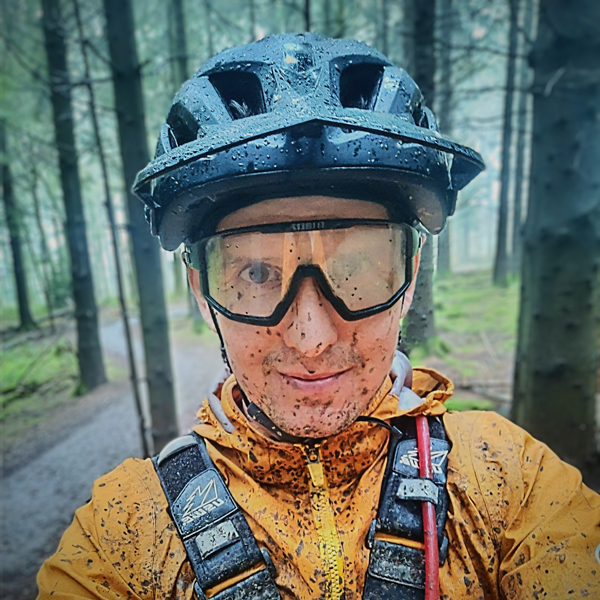The 130mm-travel Atherton AM.130.1 is making waves on the trails. The interest in this intriguing bike is palpable and it's not hard to understand why.
Built with a modern approach and showcasing meticulous handmade craftsmanship, the AM.130.1 features the DW6 suspension linkage, adding a touch of mystique.
But how does all this translate to the reality of a short-travel trail bike? Can the Atherton AM.130.1 live up to the brand's reputation for pushing boundaries? I had the chance to put it through its paces over several weeks this winter.
Whether cruising the local woods, keeping up with BikePark Wales locals or navigating the diverse terrain of the Forest of Dean, I gained valuable insight into how the bike handles various conditions.
From fast and rough trails to slow and technical sections, and punchy climbs in between, the AM.130.1 showcased its versatility.
It's not entirely flawless, but it has become my new benchmark for the best trail bikes.
Atherton AM.130.1 frame details
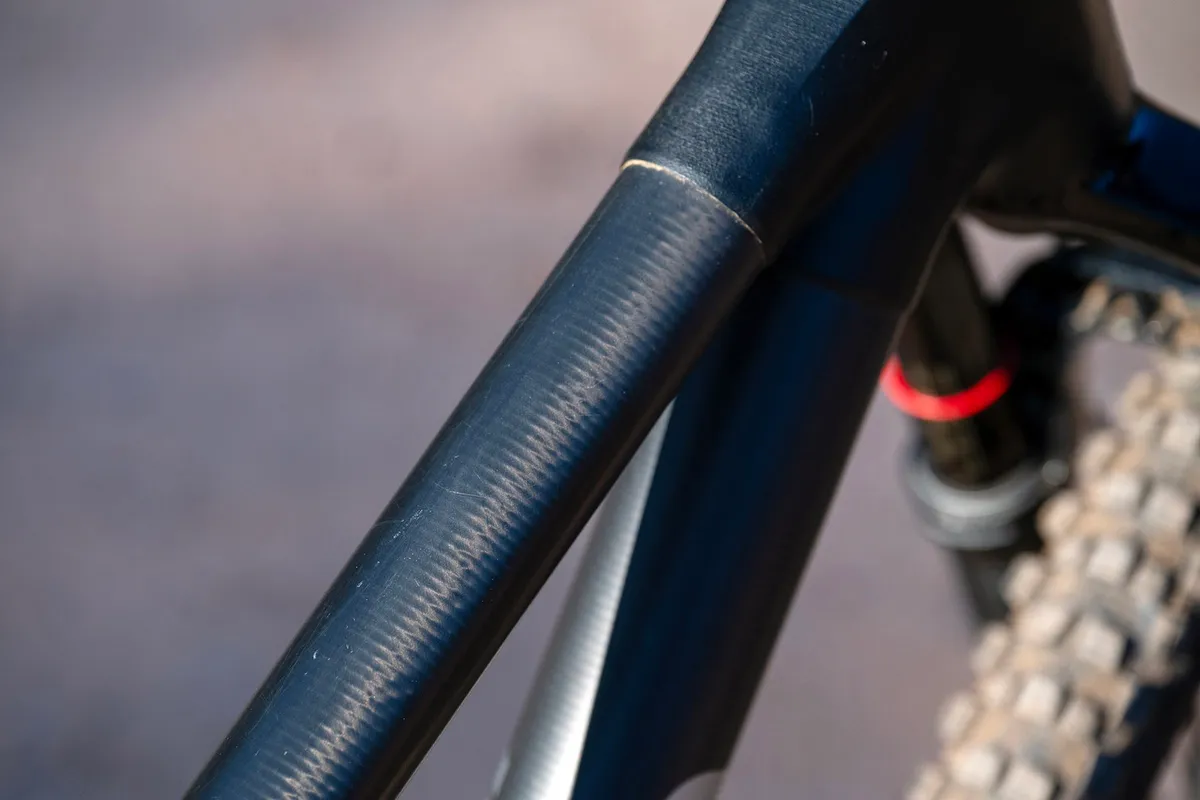
Atherton's additive manufacturing involves 3D printing titanium lugs. The process is quite novel in the bike industry: a Renishaw machine uses four lasers to melt together thin layers of titanium alloy powder, creating lugs with up to 3,500 layers over approximately 16 hours.

The beauty of these 3D-printed lugs lies in their versatility – they can be designed in almost any shape.
This adaptability enables Atherton to offer the AM.130.1 in an impressive 22 frame sizes, along with the option for custom-geometry frames.
After printing, the lugs undergo heat treatment, are cut from their base and receive a hand-finished touch for that final appearance. Threads and bearing seats are precision-cut before being bonded to the frame's carbon-fibre tubing.
Atherton Bikes custom designs each tube individually for its strength and stiffness requirements, to produce a frame that is claimed to provide the best balance between acceleration and cornering grip.
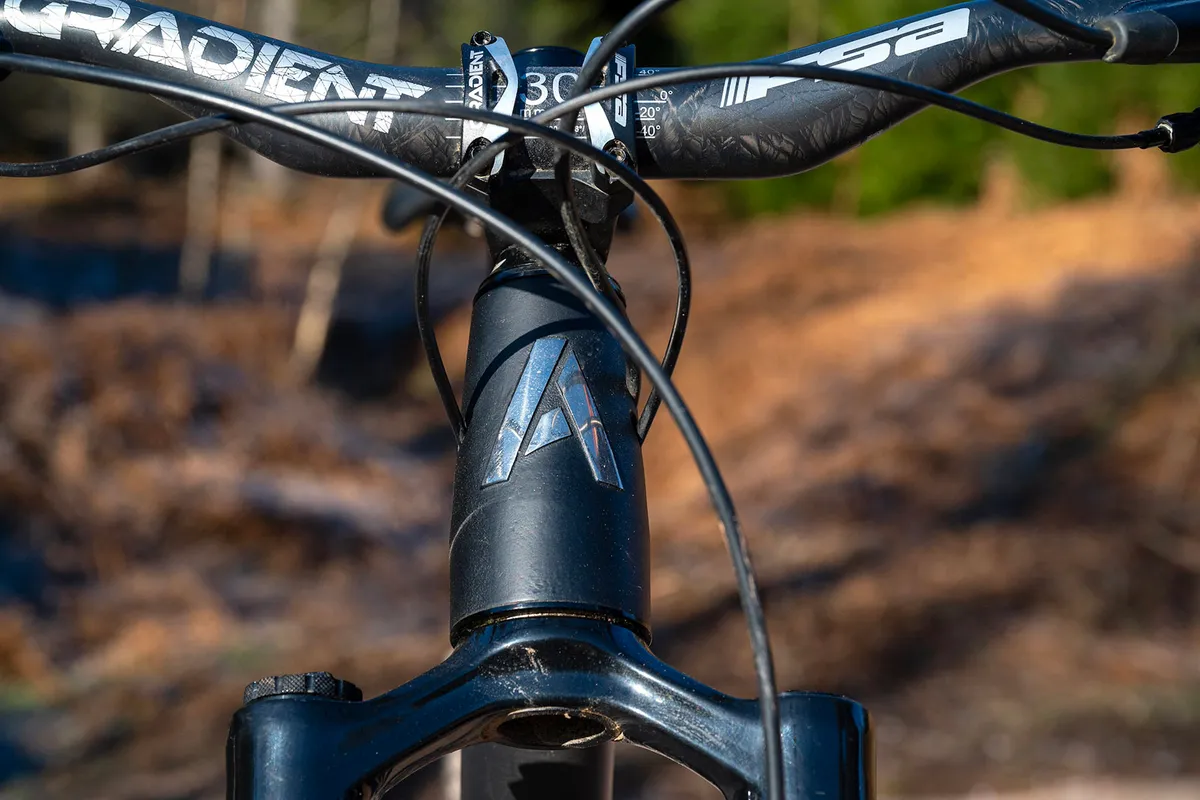
The AM.130.1's frame features are kept simple. There's no internal frame storage, adjustable geometry or extra mounts for tools.
However, it does include practical elements such as a water bottle mount, internally sleeved cable routing and thoughtful frame protection on the down tube and chainstays.
Atherton AM.130.1 suspension details
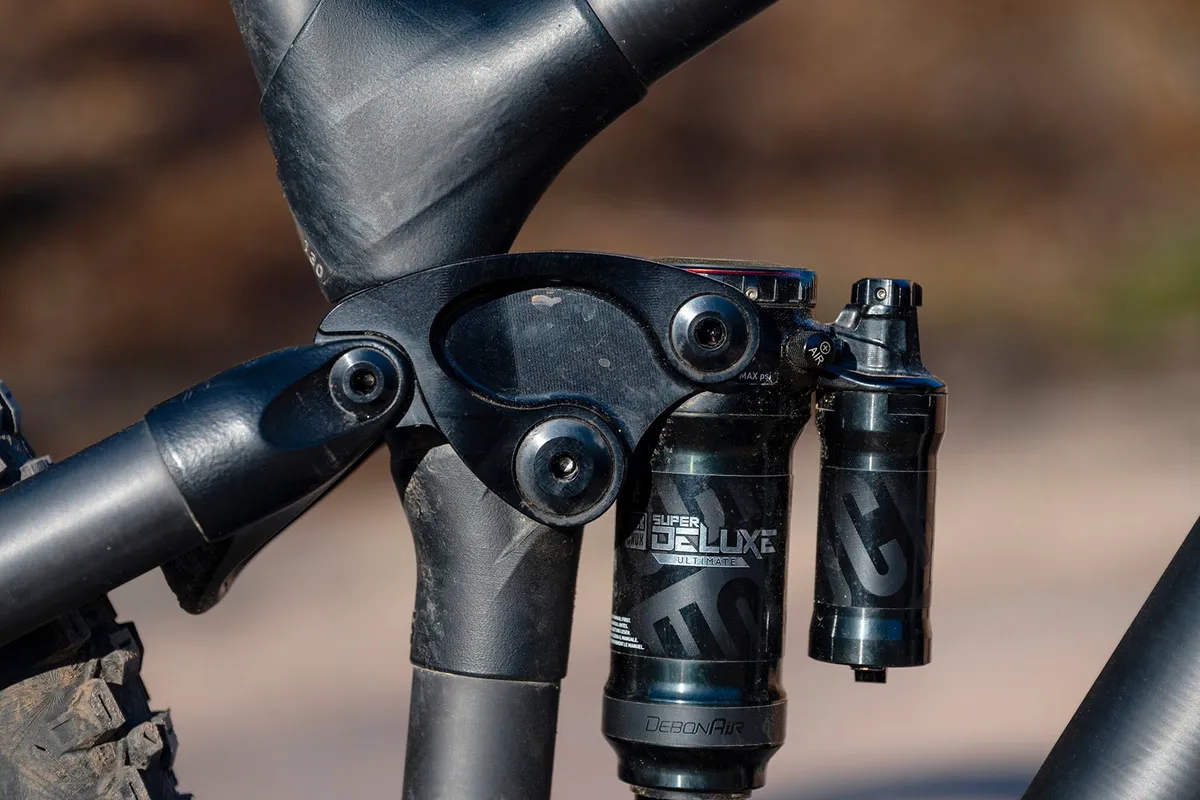
There's a deliberate lack of leverage curves and anti-squat graphs online, shrouding the DW6 in an air of secrecy.
This isn't purely to keep enthusiasts on their toes; it's to prevent misinterpretations that might not accurately reflect how the bike will perform for each rider, according to the brand.
The DW6 layout's six bars include the main frame, two short links connecting the chainstay, the chainstay itself, the seatstay and the upper rocker.
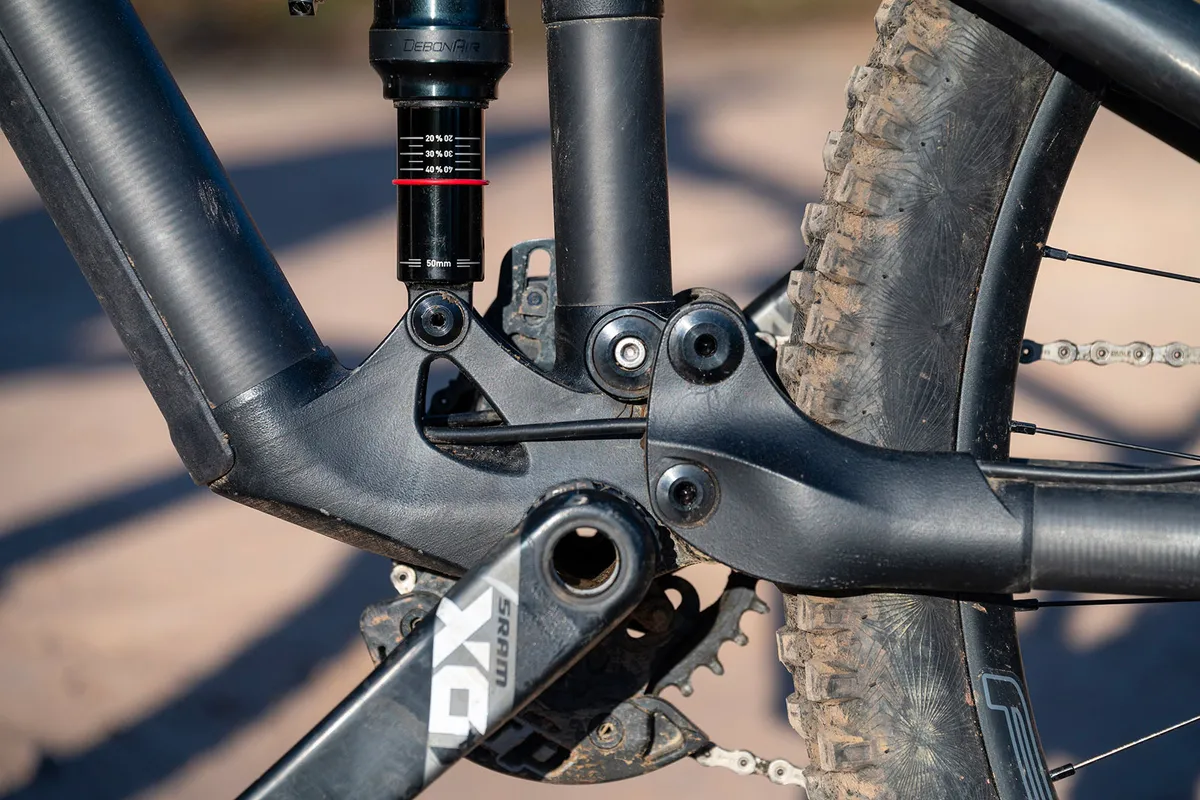
While Dave Weagle (the designer of the DW6 link) might have a different take, I see this pivot setup as a mix of twin-link and Horst-link suspension designs.
Here's the breakdown: the chainstay connects to the mainframe through two short links, creating its own centre of curvature that moves during compression.
Think of it in the same way as twin-link bikes from brands such as Ibis, Pivot and Giant.
However, instead of a solid rear triangle, an extra Horst-link pivot splits the rear triangle. The axle and brake mount find their place on the seatstay, driving a rocker on the seat tube to compress the shock, just like in a Horst-link design.
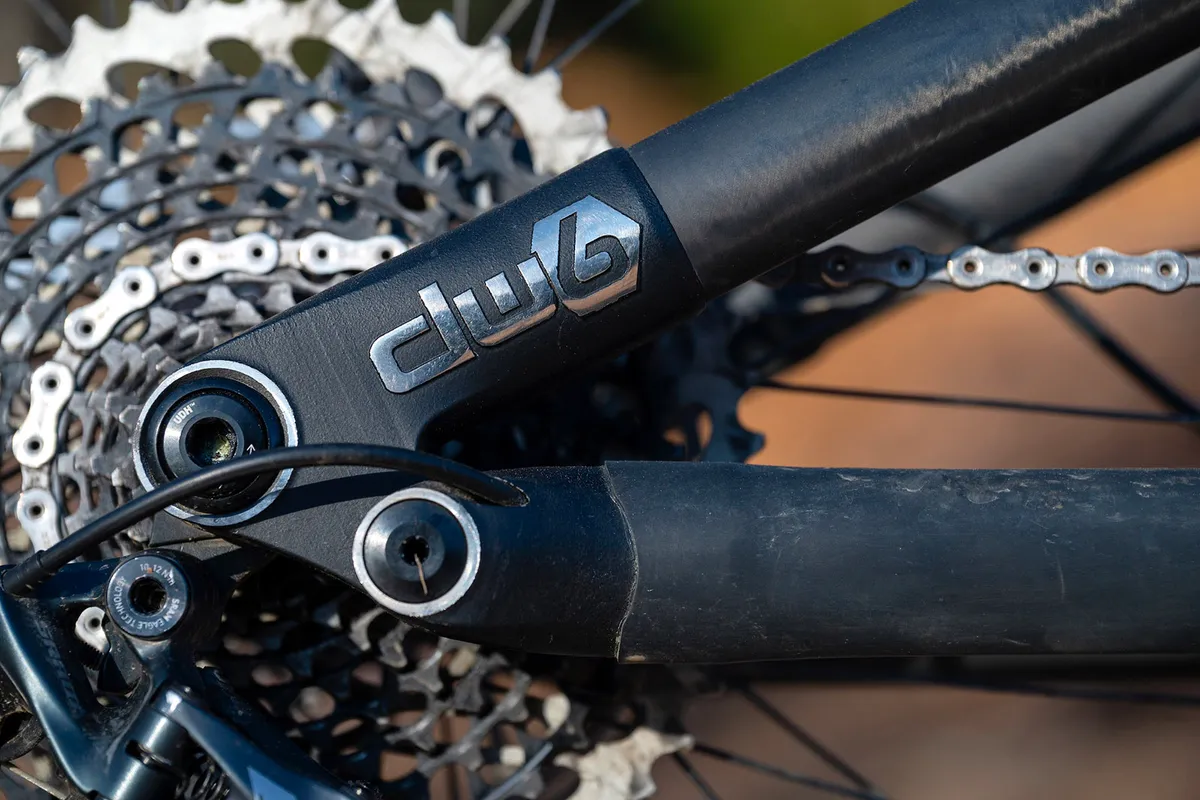
Atherton AM.130.1 geometry
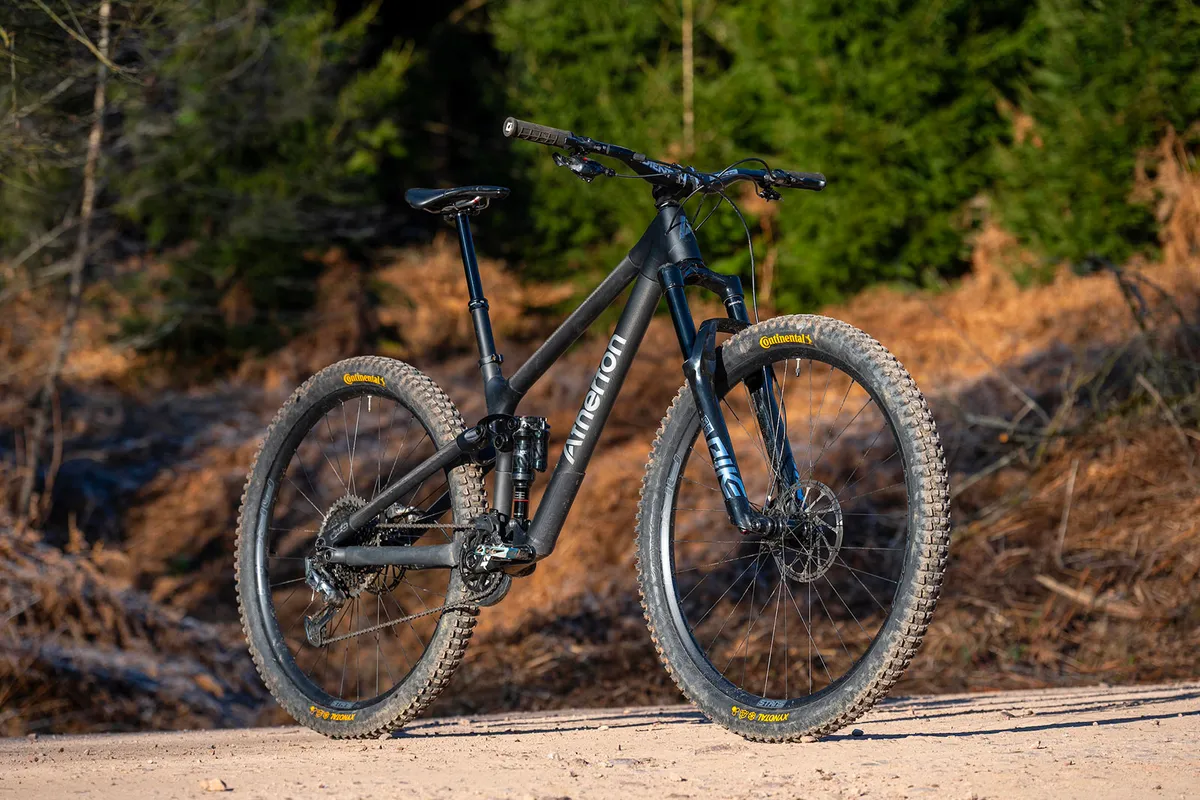
There are 22 frame-size options for the AM.130.1. Atherton Bikes offers its own frame size recommendations based on your body measurements, and I was sent a size-5 bike for my 173cm height.
This results in a modest 450mm reach and middling 617mm stack height. It features a trail-friendly 65.5-degree head tube angle and steep 78-degree effective seat tube angle. These combine to give the AM.130.1 a comfortable 581mm effective top tube length.
There’s a short and snappy 433mm chainstay length and low 335mm bottom bracket height, which should give the bike a playful demeanour. The seat tube is a short 380mm, leaving plenty of room to move around the bike.
On paper, the key stats aren’t boundary-pushing, and some would argue they're a little outdated, but there’s more to a bike than just its key geo figures. Head to the Atherton Bikes website for details on all 22 frame sizes.
| | 1 | 2 | 3 | 4 | 5 | 6 | 7 | 8 | 9 | 10 | 11 | 12 | 13 | 14 | 15 | 16 | 17 | 18 | 19 | 20 | 21 | 22 |
|---|---|---|---|---|---|---|---|---|---|---|---|---|---|---|---|---|---|---|---|---|---|---|
| 410 Low | 420 Low | 430 Low | 440 Low | 450 Low | 450 Reg | 460 Low | 460 Reg | 470 Low | 470 Reg | 480 Low | 480 Reg | 490 Reg | 490 tall | 500 Reg | 500 Tall | 510 Reg | 510 X-Tall | 520 Tall | 520 X-Tall | 530 Tall | 530 XX-Tall | |
| Seat tube angle (degrees) | 77 | 77 | 77 | 77 | 78 | 78 | 78 | 78 | 78 | 78 | 78 | 78 | 79 | 79 | 79 | 79 | 79 | 79 | 79 | 79 | 79 | 79 |
| Head tube angle (degrees) | 65.5 | 65.5 | 65.5 | 65.5 | 65.5 | 65.5 | 65.5 | 65.5 | 65.5 | 65.5 | 65.5 | 65.5 | 65.5 | 65.5 | 65.5 | 65.5 | 65.5 | 65.5 | 65.5 | 65.5 | 65.5 | 65.5 |
| Chainstay (mm) | 430 | 430 | 430 | 430 | 433 | 433 | 433 | 433 | 433 | 433 | 433 | 433 | 436 | 436 | 436 | 436 | 436 | 436 | 436 | 436 | 436 | 436 |
| Seat tube (mm) | 380 | 380 | 380 | 380 | 380 | 400 | 380 | 400 | 380 | 400 | 380 | 400 | 400 | 440 | 400 | 440 | 400 | 460 | 440 | 460 | 440 | 475 |
| Top tube (mm) | 550 | 560 | 570 | 580 | 581 | 583 | 591 | 593 | 601 | 603 | 611 | 613 | 612 | 612 | 622 | 622 | 632 | 634 | 642 | 644 | 652 | 654 |
| Head tube (mm) | 100 | 100 | 100 | 100 | 110 | 120 | 110 | 120 | 110 | 120 | 110 | 120 | 120 | 120 | 120 | 120 | 120 | 130 | 120 | 130 | 120 | 130 |
| Bottom bracket drop (mm) | 38 | 38 | 38 | 38 | 38 | 38 | 38 | 38 | 38 | 38 | 38 | 38 | 38 | 38 | 38 | 38 | 38 | 38 | 38 | 38 | 38 | 38 |
| Bottom bracket height (mm) | 335 | 335 | 335 | 335 | 335 | 335 | 335 | 335 | 335 | 335 | 335 | 335 | 335 | 335 | 335 | 335 | 335 | 335 | 335 | 335 | 335 | 335 |
| Wheelbase (mm) | 1,154 | 1,164 | 1,174 | 1,184 | 1,201 | 1,206 | 1,211 | 1,216 | 1,221 | 1,226 | 1,231 | 1,236 | 1,249 | 1,249 | 1,259 | 1,259 | 1,269 | 1,273 | 1,279 | 1283 | 1289 | 1293 |
| Stack (mm) | 608 | 608 | 608 | 608 | 617 | 627 | 617 | 627 | 617 | 627 | 617 | 627 | 627 | 627 | 627 | 627 | 627 | 636 | 627 | 636 | 627 | 636 |
| Reach (mm) | 410 | 420 | 430 | 440 | 450 | 450 | 460 | 460 | 470 | 470 | 480 | 480 | 490 | 490 | 500 | 500 | 510 | 510 | 520 | 520 | 530 | 530 |
Atherton AM.130.1 specifications
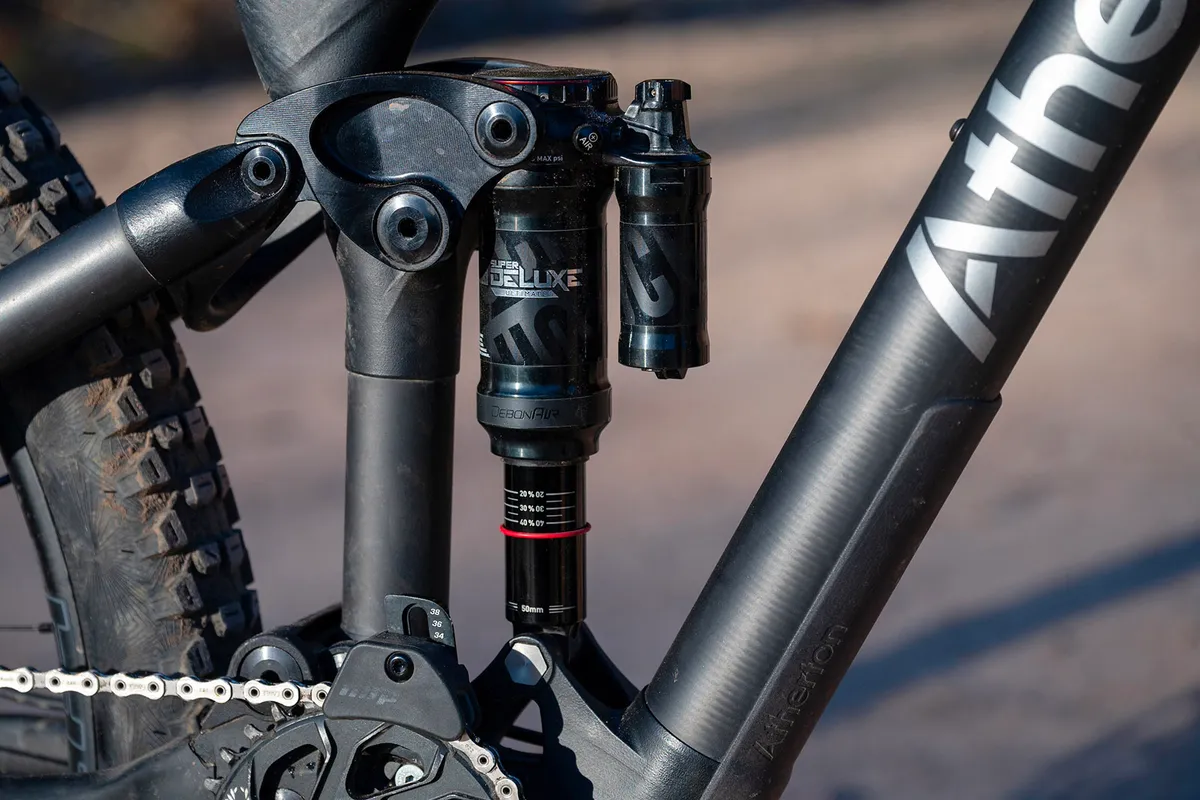
The AM.130.1 is Atherton’s most expensive trail bike. It has plenty of impressive parts, but for its price it's not dripping in the latest components.
The suspension is taken care of by RockShox, with its Pike Ultimate RC2 Charger 2.1 fork up-front and Super Deluxe Ultimate RCT shock. These both feature plenty of adjustability to get the suspension dialled in.
There’s a SRAM X01 Eagle drivetrain. The bike uses a SRAM Universal Derailleur Hanger, so you should be able to fit SRAM’s electronic Transmission to the frame.
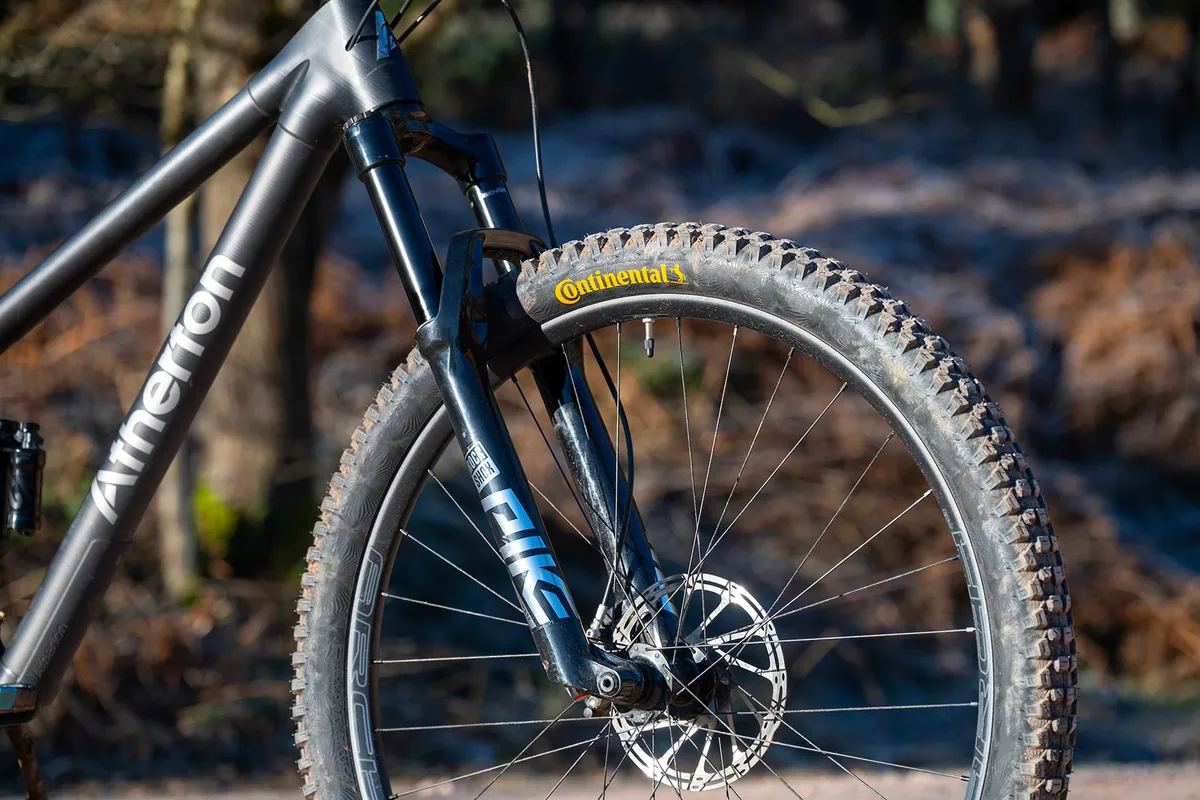
It rolls on Stan's Arch Mk4 wheels fitted with 29x2.4in Continental Xynotal tyres in their trail casing and endurance compound.
To slow down, the AM.130.1 relies on SRAM G2 RSC brakes with 180mm rotors. The cockpit uses FSA’s 35mm-diameter Gradient Carbon handlebar and Gradient stem with ODI Elite Flow grips.
The build is completed by a Fox Transfer Factory dropper post and Prologo Proxim Sport saddle.
This build kit and size tips the scales at 14.24kg. That's respectable for a bike that passes downhill safety standards and shows its intentions, but it's not the lightest for a speedy trail ripper.
Atherton AM.130.1 ride impressions
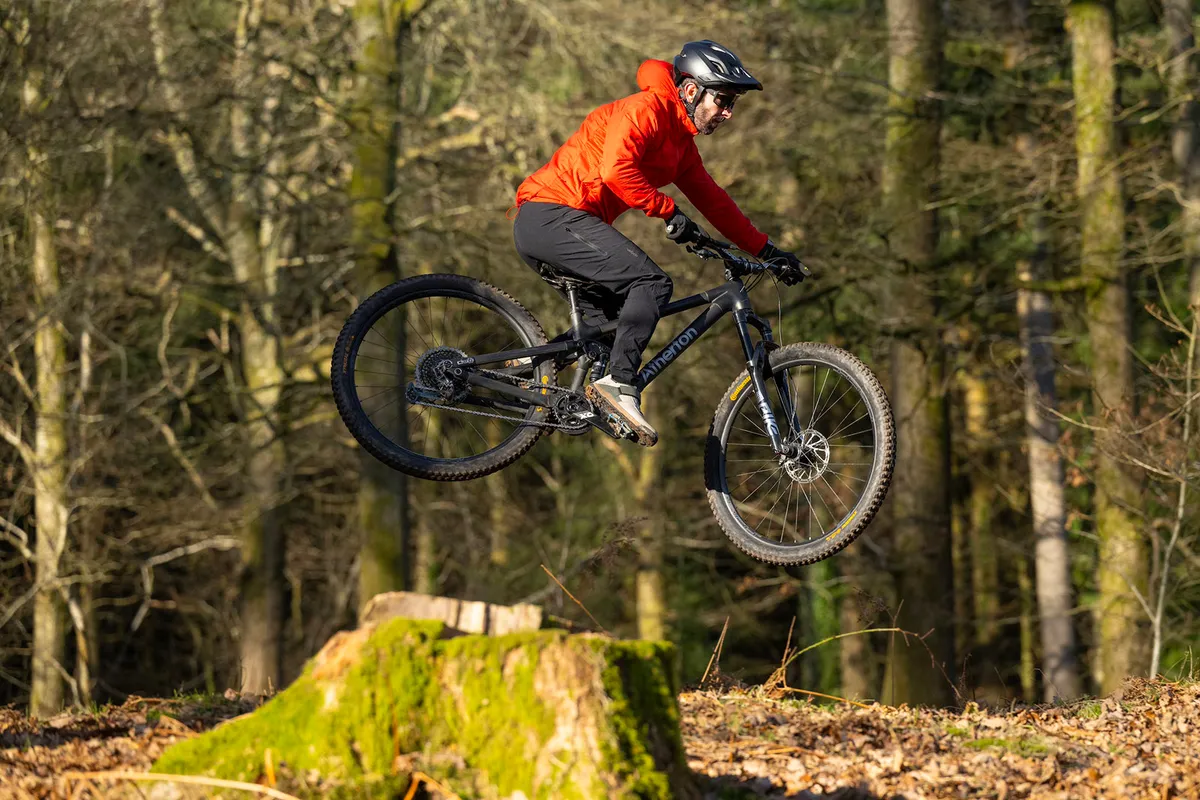
I've been putting the Atherton AM.130.1 through its paces for a good few weeks now, navigating the natural tech trails in the Forest of Dean and tearing up the diverse terrain at BikePark Wales.
This gave me a diverse range of trails to push the AM.130.1 and find where its strengths and weaknesses lie.
I set up the RockShox Super Deluxe Ultimate shock with 30 per cent sag, which meant 174psi for my 75kg kitted-up weight.
I ran the low-speed compression open and used the climb switch as and when I needed it. Rebound was set to four clicks from closed out of five.
For the RockShox Ultimate RC2 Charger 2.1 fork, I ran 84psi, giving around 20 per cent sag. I ran the high-speed compression at three clicks open of five, and low-speed compression was fully open to maximise sensitivity.
With no geometry adjustments, getting the Atherton AM.130.1 set up was simple enough, and I didn’t have any issues getting the cockpit and saddle height in my preferred positions.
Atherton AM.130.1 climbing performance
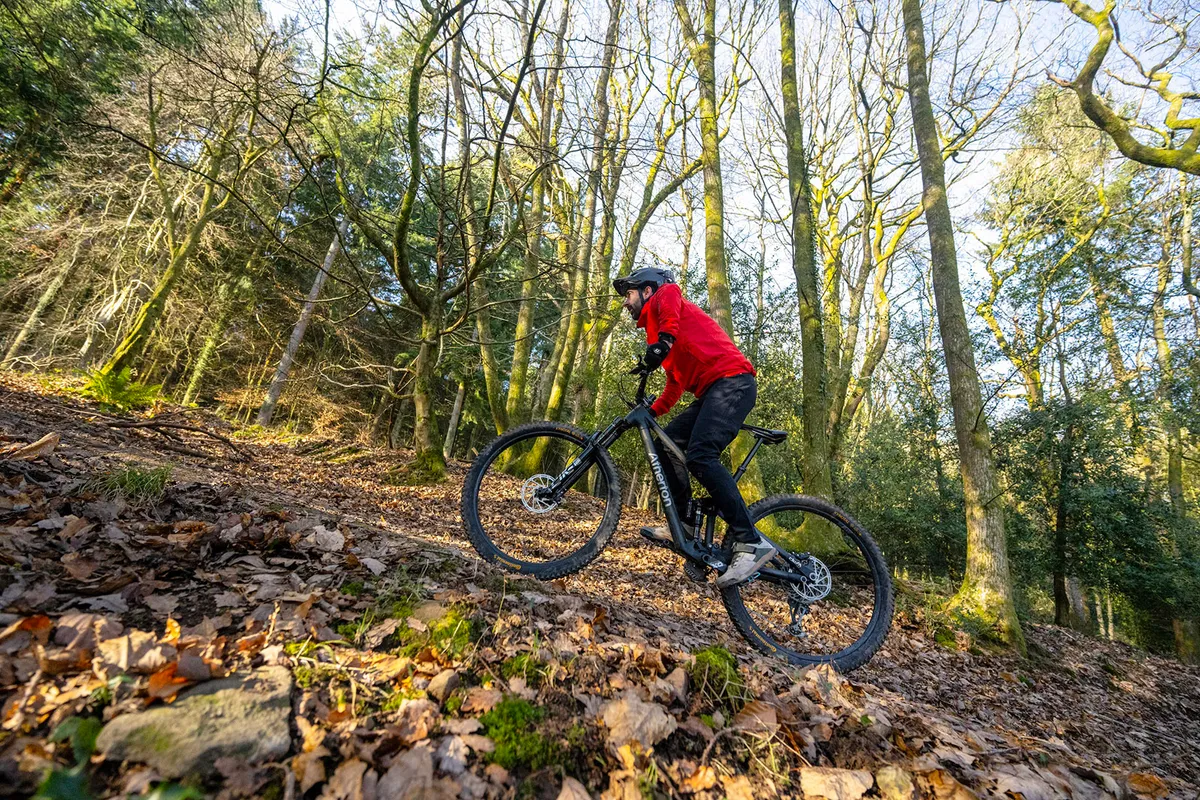
The AM.130.1 might not be the most spirited 130mm-travel trail bike uphill, but it's no slouch on the climbs.
Once it settles into its sag point, there's a noticeable absence of demoralising bob while seated pedalling.
The rear end maintains a calm and stable demeanour, even with the shock set to open, offering enough sensitivity to smooth out trail imperfections comfortably.
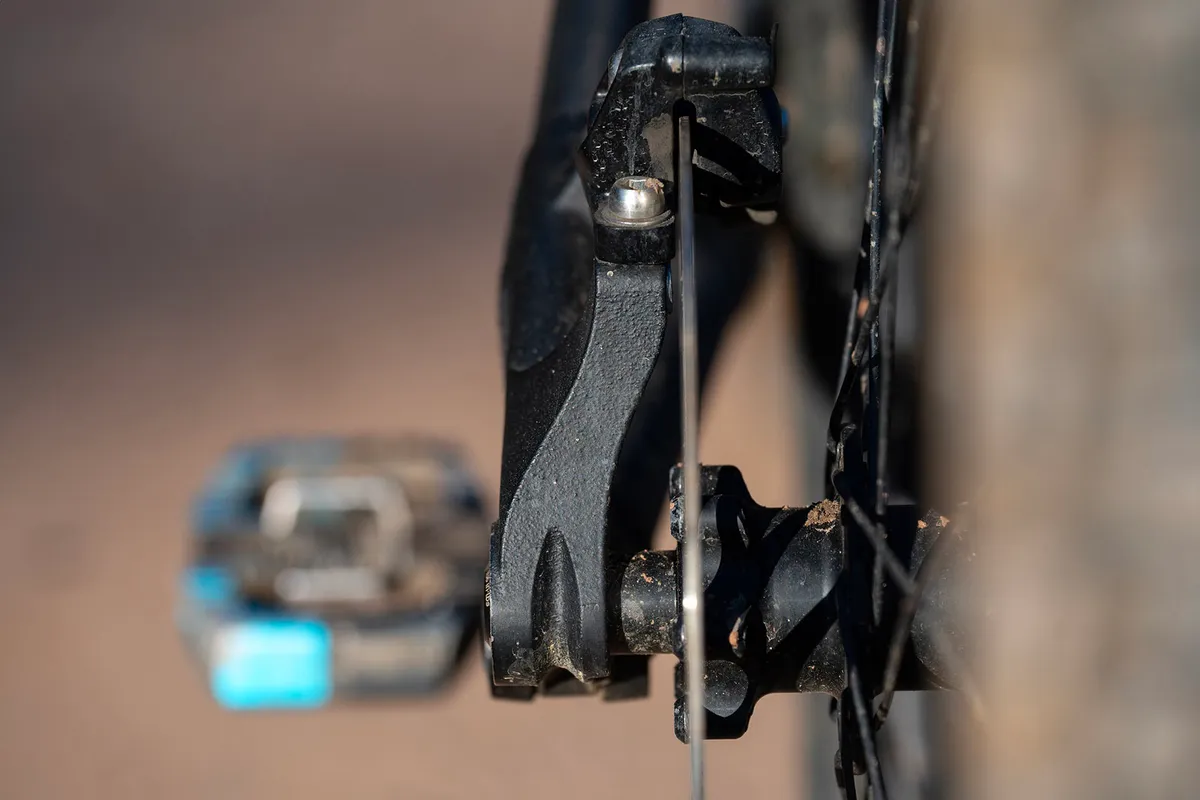
I experimented with the shock climb switch, relishing the ease of reaching the climb lever on smooth fire roads or steep scrambles.
Firming up the rear end proves beneficial, elevating the bottom bracket, steepening the head tube, adjusting the effective seat tube angle and shifting weight forward subtly.
While I appreciated the low bottom bracket height, technical rocky climbs with the 170mm cranks required a bit of pedal-placement finesse to avoid scraping them on the rocks.
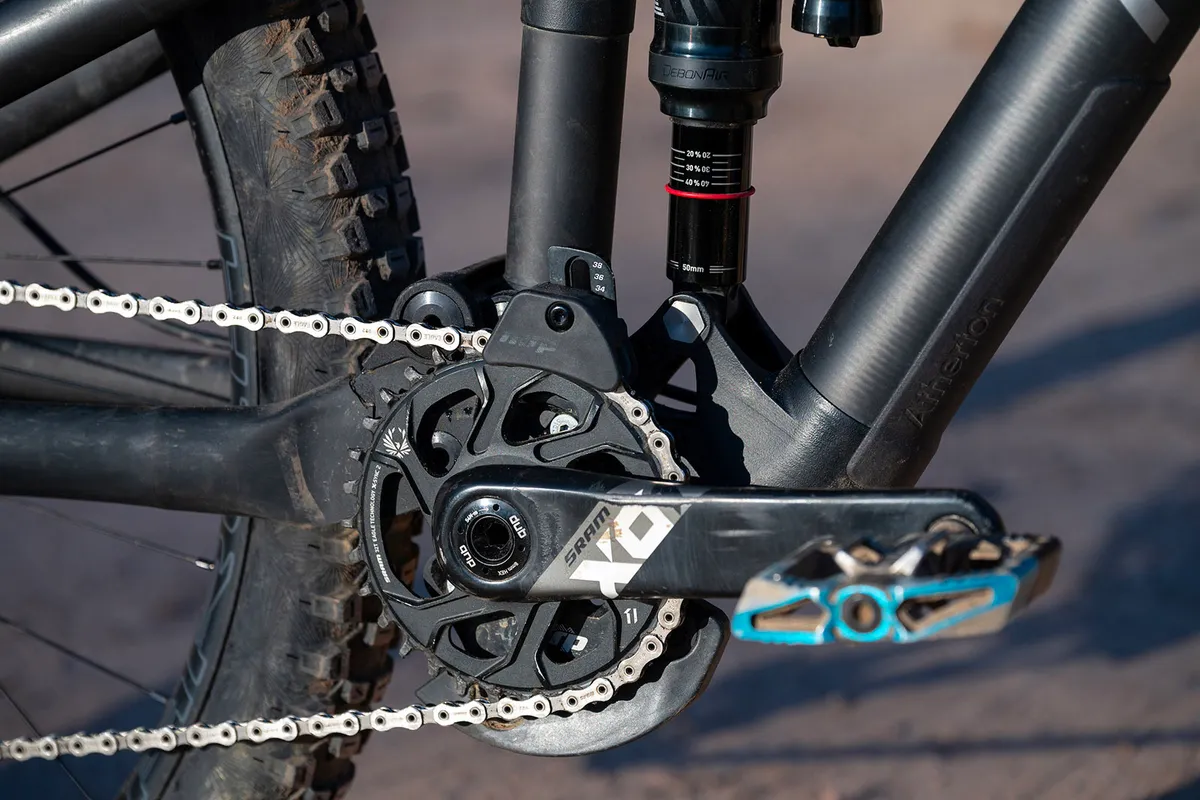
A personal preference would be a 165mm crank length. At this price, it's hopefully something Atherton would be able to swap out for.
Pedalling comfort was a breeze, thanks to the well-balanced, fairly short 581mm effective top tube and the middling 617mm stack height.
This setup struck a sweet spot, providing enough weight on the front wheel for precision and control on technical trails. However, I never felt stretched or uncomfortable on longer, smooth climbs.
When you stand up and push it, the suspension's sensitive beginning stroke becomes apparent. Yet it doesn't hold the bike back when you stomp on the pedals, displaying an eagerness to charge forward.

The climbing finesse gets an extra boost from Continental's Xynotal trail tyres. They roll surprisingly well, without feeling as though they're sapping your energy, despite the grip they offer.
The AM.130.1 defies easy categorisation. While its short travel might hint at a climbing preference, that's not its biggest forte.
The AM.130.1 is a solid climber, zipping happily around the mountainside. However, in the realm of 130mm-travel trail bikes, snappier options are available for those seeking an extra dose of responsiveness. You could tweak it to be a speedy trailblazer, but that would be overlooking its party trick.
Atherton AM,130.1 descending performance
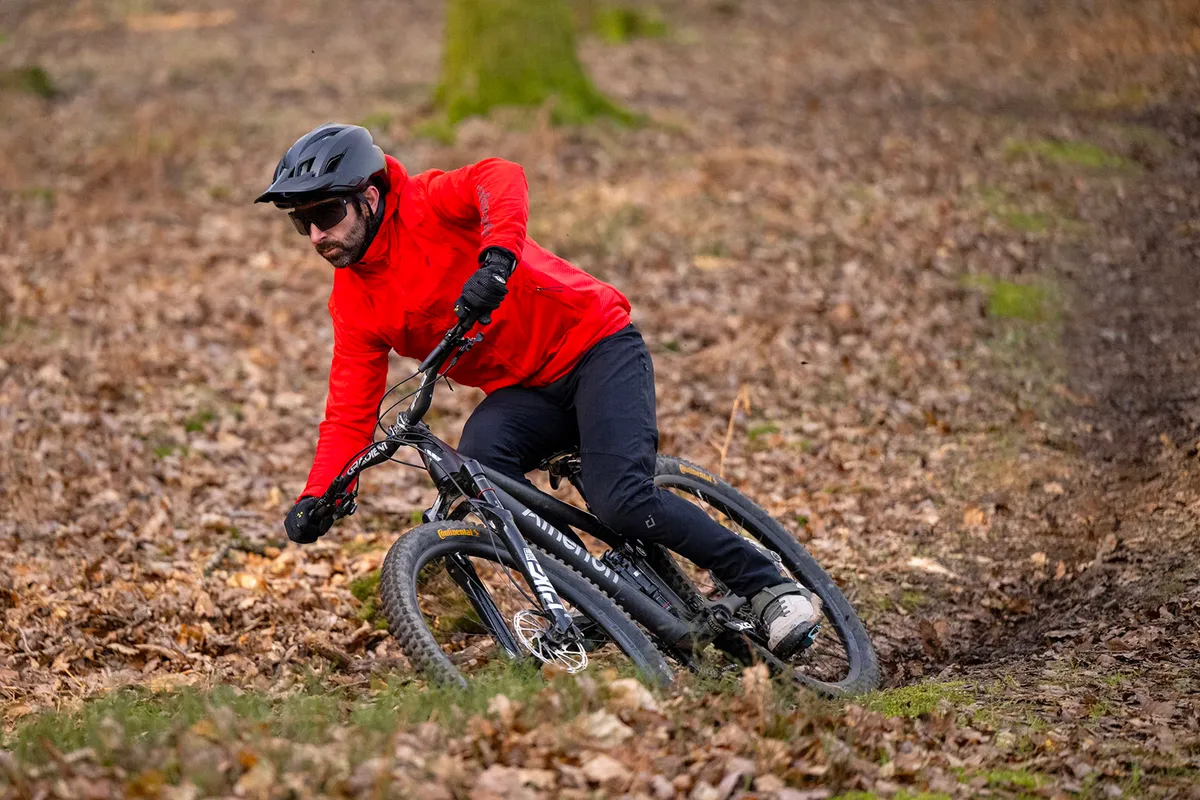
This has to be the new benchmark for short-travel trail bikes – so much so, I had to check Atherton hadn’t sent the AM.150 instead.
The DW6 platform offers an incredible balance between sensitivity and support, turning the 130mm-travel Atheron 130.1 into a potent trail rocket.
Its small-bump compliance is notable and deals with rumble-strip trail chatter efficiently. It irons out those small speed-sapping trail imperfections and high-frequency bumps with the soothing touch of a longer-travel bike.
Yet, it remains light-footed and eager to respond to rider input.
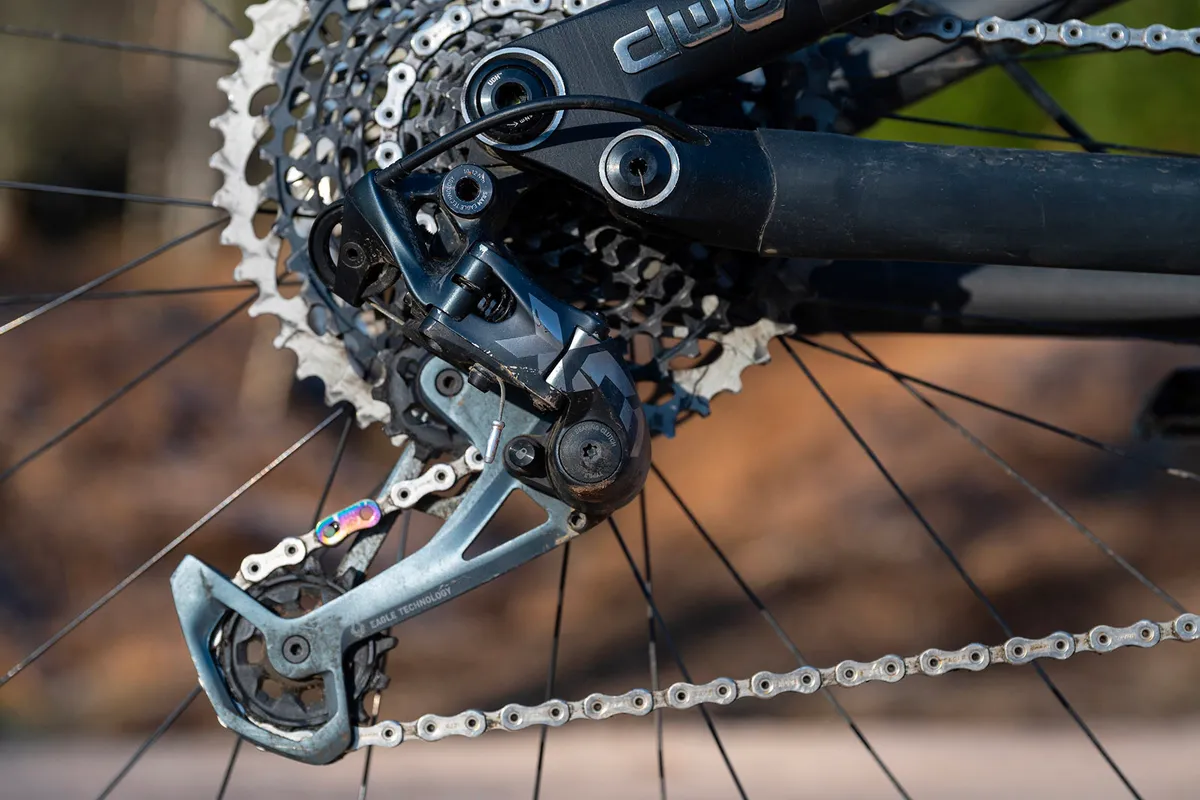
This isn’t to say the bike mutes the trail like a plush 160mm-travel enduro bike. It doesn’t. But it flutters over bike-park rubble and trail-centre chunk with a subtle touch that does well to take the sting out of those frustratingly bumpy, but not rough trails.
Once speed picks up and the trail gets rougher, there’s ample support that builds smoothly through its travel. In a blind test, I would guess there’s more travel on tap than 130mm.
Charge into a section of roots, rocks or braking bumps and those square-edge hits are absorbed without harshness transferring through the pedals to the rider.

The AM.130.1 remains composed and calm, letting its refined progression dull the sharp impacts and keep the bike ploughing forwards.
Again, it can’t keep up with an enduro bike, but for a short-travel trail bike, it eats bumps for breakfast and comes back for seconds.
Throw the AM.130.1 down a black trail littered with jump lines and drops, and there’s plenty of support to keep it from blowing through its travel.
Hammer through harsh compression and high-load turns, and the bike retains a stability that inspires confidence.
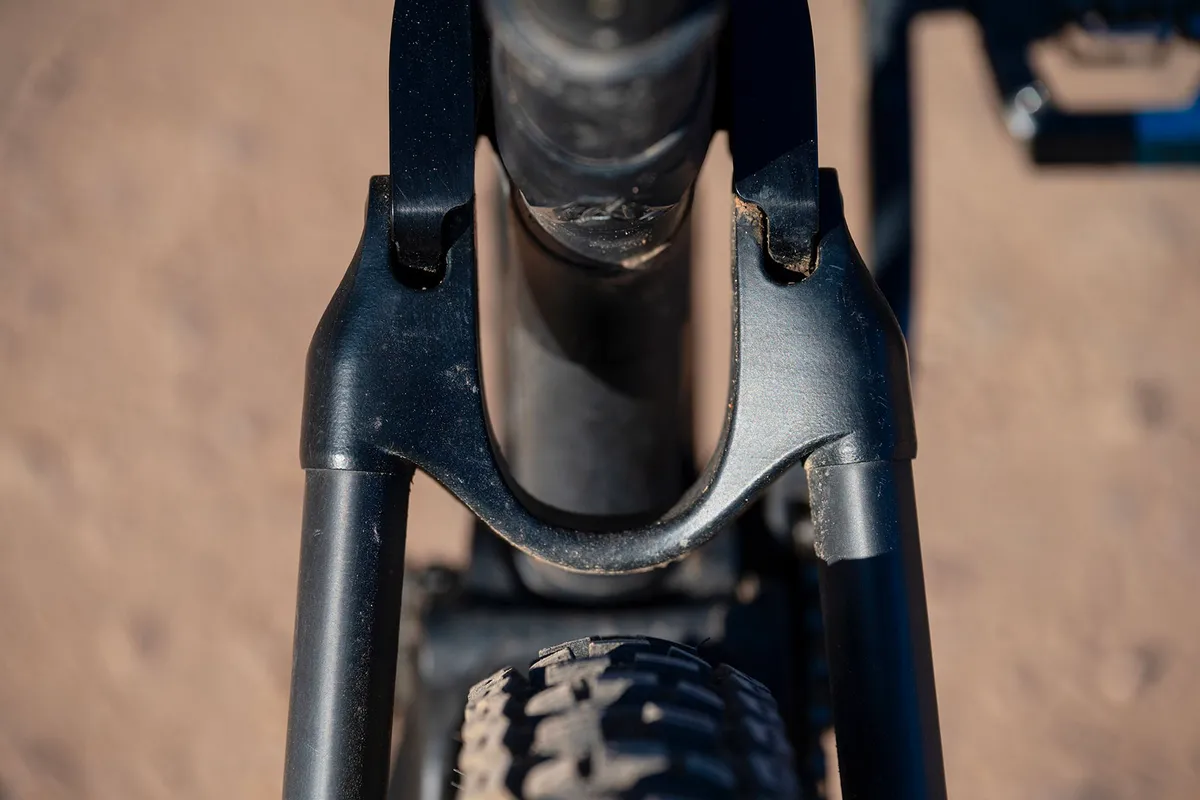
This smooth progression also helps maintain speed on flow-sapping undulating trails, where you need to pump and pedal to keep momentum.
The lively AM.130.1 feels eager to charge through the turns. While its stats may seem twitchy, it balances its eagerness to dive into turns with a stability that delivers confidence.
This makes the bike great for nipping through quick, jinking turns, where you can take advantage of its nimble yet surprisingly sure-footed feel.
The low bottom bracket and supple beginning stroke also help hunt out grip, and the Xynotal tyres offer more traction and damping than their compound and casing suggest.
That gives the bike a more ground-hugging ride character than you often get from a short-travel trail bike.
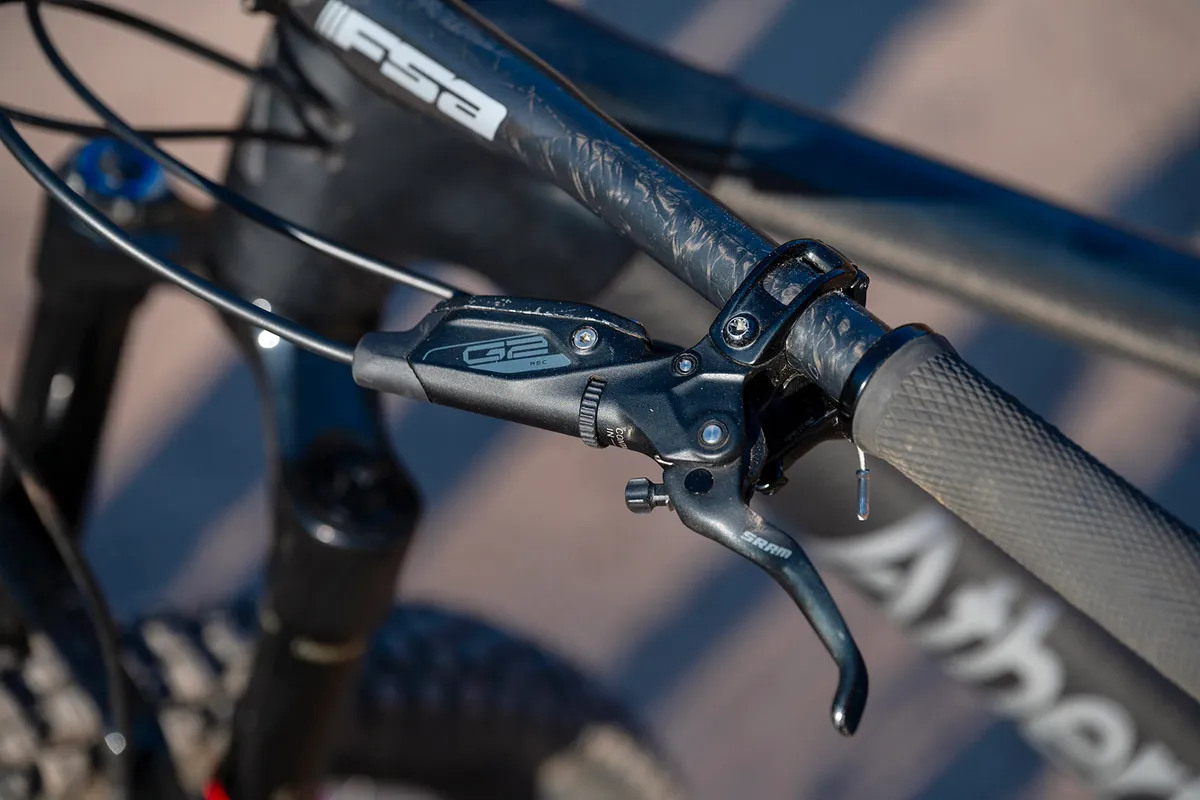
Now for the reality check – the SRAM G2 RSC brakes with 180mm rotors might leave you wanting a bit more stopping power on steep descents.
A second set of frame mounts for tool storage would be a welcome addition too, considering there's no internal frame storage.
Yet, despite these nitpicks, the kit on this bike, while not the latest, performs well. It stood up to rigorous testing, only succumbing to a couple of rear-wheel punctures on the rocky trails of BikePark Wales – a minor hiccup for a bike that thrives on being pushed hard, no matter the terrain.
How does the Atherton AM.130.1 compare to the Norco Fluid FS C2?
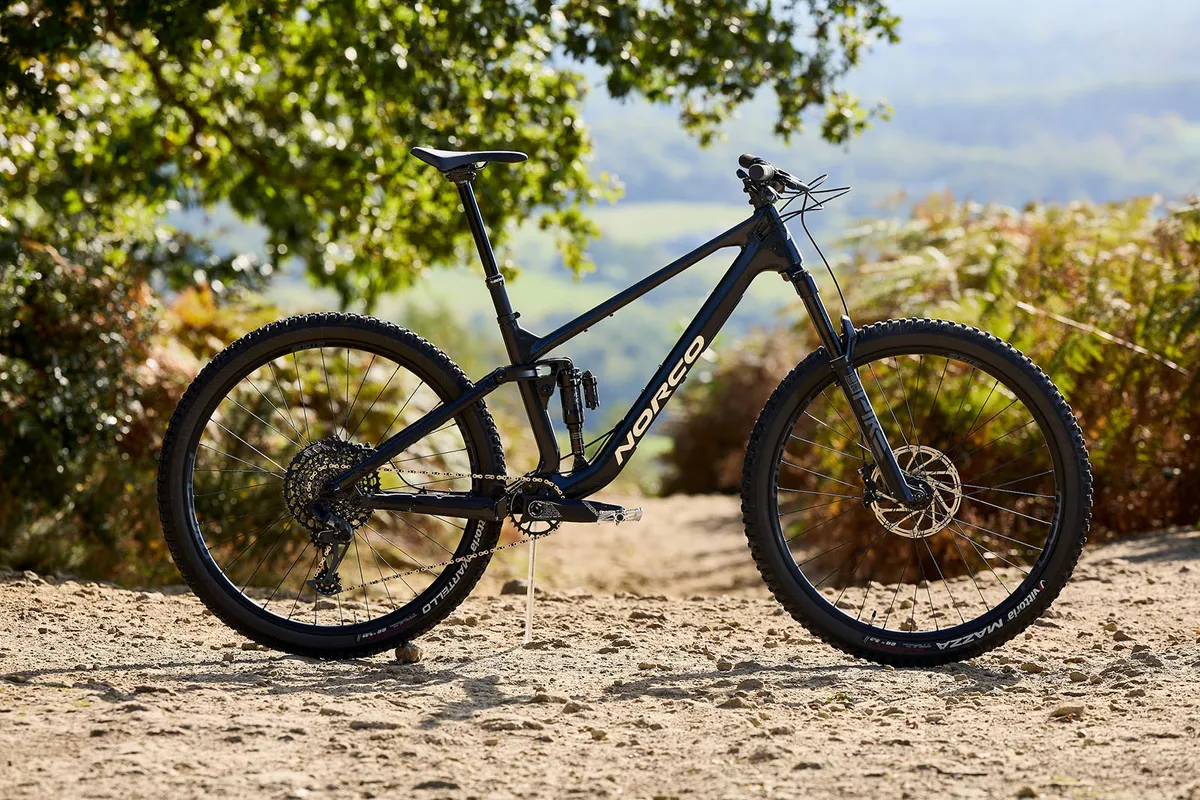
Both the Atherton and the Norco Fluid FS C2 dish out 130mm of rear-wheel travel with a 140mm fork, and each has contemporary, yet modest trail bike geometry. The Norco uses a 4-bar Horst-link platform, whereas the Atherton gets the more complicated yet tunable DW6 linkage.
On the trail, the Atherton’s suspension is more suited to rumbling over anything in its way, yet it does so with a delicate but reassuringly sure-footed touch. The Norco’s more suited to hopping and popping its way down the trail, with a playful demeanour that promotes side-trail shenanigans.
While both bikes feel as though they deliver more travel than is on tap, the ceiling for speed is perhaps higher for the Atherton, and downhill capability is seriously impressive. The Norco is a capable climber, but so is the Atherton, and both can charge around a trail centre without becoming a drag.
If you’re after simplicity and fun, the Norco is a brilliant bike. If you want something special that truly shines on the trail, the Atherton is your choice. But it will cost you.
Atherton AM.130.1 bottom line

The Atherton AM.130.1 impressed me right from the get-go. It’s incredibly capable, no matter what trail it's on.
The balance of initial suppleness and progressive support promotes hard charging and punches above its weight.
It's fun on the flow lines, nimble through jinking tech and competent when the trails get wild. It’ll climb back up capably and never feels out of place.
For riders wanting a great all-rounder that’s light, capable and a little bit special, the AM.130.1 is worth careful consideration.
Product
| Brand | Atherton |
| Price | €7345.00, £7800.00, $7735.00 |
| Weight | 14.24kg |
Features
| Fork | RockShox Pike Ultimate RC2 Charger 2.1 |
| Stem | FSA Gradient (50mm) |
| Chain | SRAM X01 Eagle |
| Frame | Titanium/carbon fibre, 130mm travel |
| Tyres | Continental Xynotal Trail 29x2.4in |
| Brakes | SRAM G2 RSC 180/180mm rotors |
| Cranks | SRAM X01 Eagle |
| Saddle | Prologo Proxim Sport |
| Wheels | Stans Arch Mk4 |
| Headset | FSA Trail |
| Shifter | SRAM X01 Eagle |
| Cassette | SRAM XG-1295 |
| Seatpost | Fox Transfer Factory |
| Grips/tape | ODI Elite Flow |
| Handlebar | FSA Gradient 35 Carbon (800mm) |
| Rear shock | RockSock Super Deluxe Ultimate RCT |
| Bottom bracket | SRAM DUB BSA73 |
| Available sizes | S1 to S22 |
| Rear derailleur | SRAM X01 Eagle |

